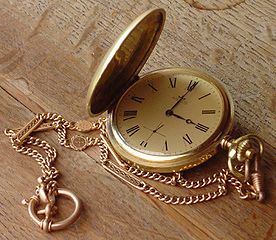Yep, Spring Forward
March 8, 2015

Image credit: Found at Deviant Art
Never thought we had that much impact on the world.
Enjoy what’s left of your Sunday.
Raving about this and that since New Year's Eve, 2006
March 8, 2015

Image credit: Found at Deviant Art
Never thought we had that much impact on the world.
Enjoy what’s left of your Sunday.
November 2, 2014

One of the actual cesium beam atomic clock units used in the 1960’s “flying clocks” experiment the synchronise time around the world. And later in the Hafele–Keating experiment to prove relativity theory. Currently kept at Agilent (formally Hewlett Packard) Melbourne headquarters. It’s accurate down to the nanosecond, but they still put an analog display on the thing. Image credit: Binarysequence/Wikimedia
Yes, strictly speaking, we set the clocks back now because we set them forward in spring, but I think you get the idea.
March 9, 2014

A savonette-type pocket watch. Image credit: Isabelle Grosjean/Wikimedia
Yes. Today. It’s time to put the clocks ahead one hour, and sleep one hour less if you’re doing anything on Sunday.
Why? Our politicians couldn’t do anything useful to curb our energy use without risking the wrath of their masters in the carbon-based energy business, so they did this instead.
On the bright side, Spring is only a couple of weeks away.
November 3, 2013 1 Comment

A 16th Century watch from Nuremberg, Germany. Image credit: Pirkheimer/Wikimedia
Beginning in 2007, Daylight Saving Time was extended one month and the schedule for the states of the United States that adopt daylight saving time are:2 a.m. on the Second Sunday in March to
2 a.m. on the First Sunday of November.
If you’ve updated your computer’s time zone data in the last six years, or you’ve checked your cell phone, you already know what time it is. Otherwise, it’s probably an hour earlier than you think it is, and you may want to set your clocks accordingly.
Recent Comments